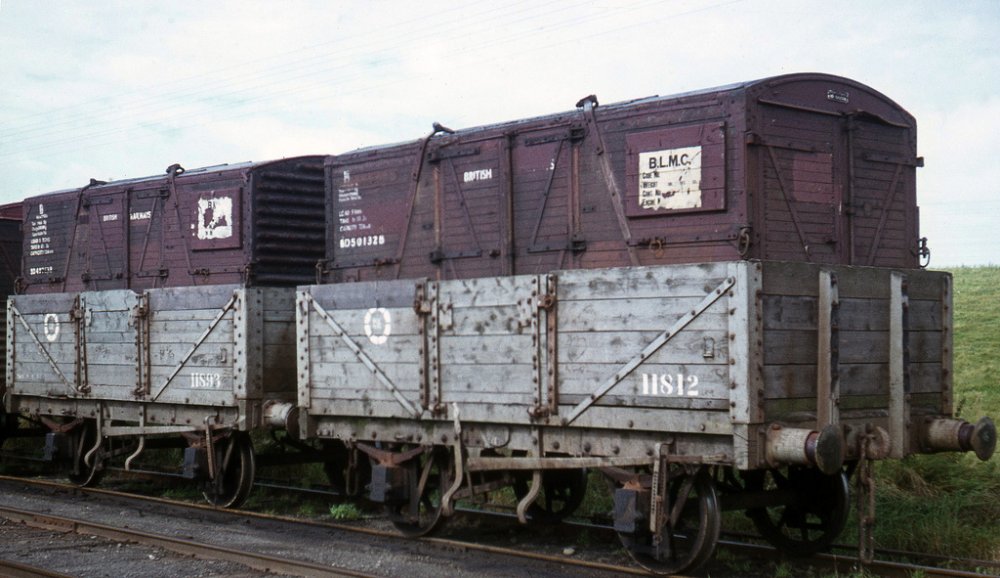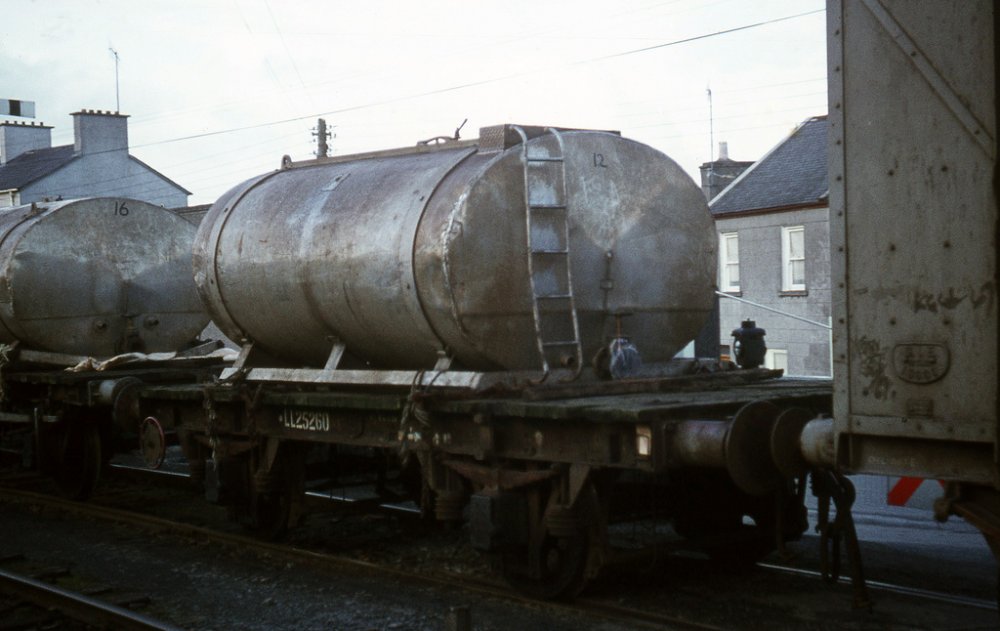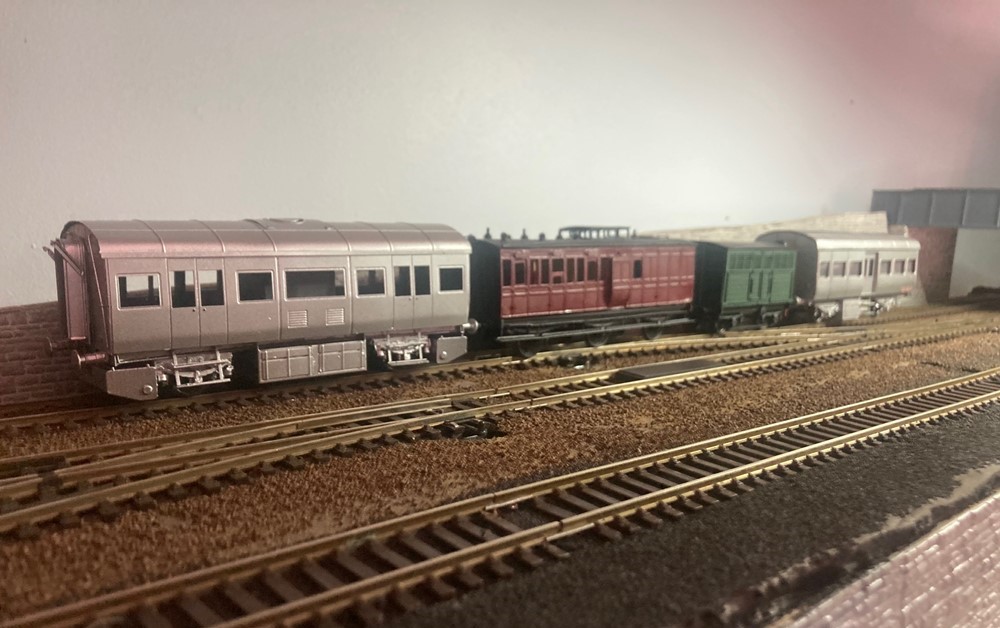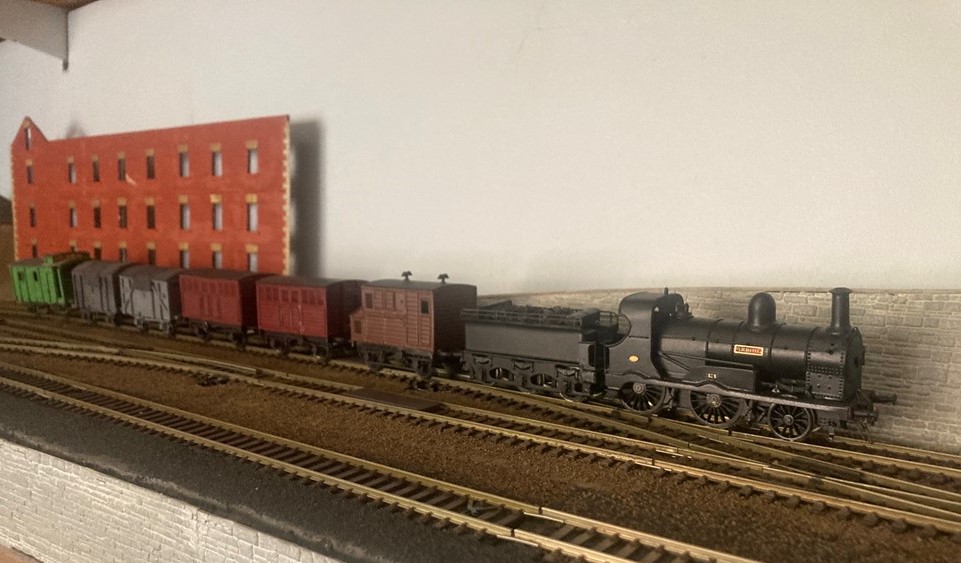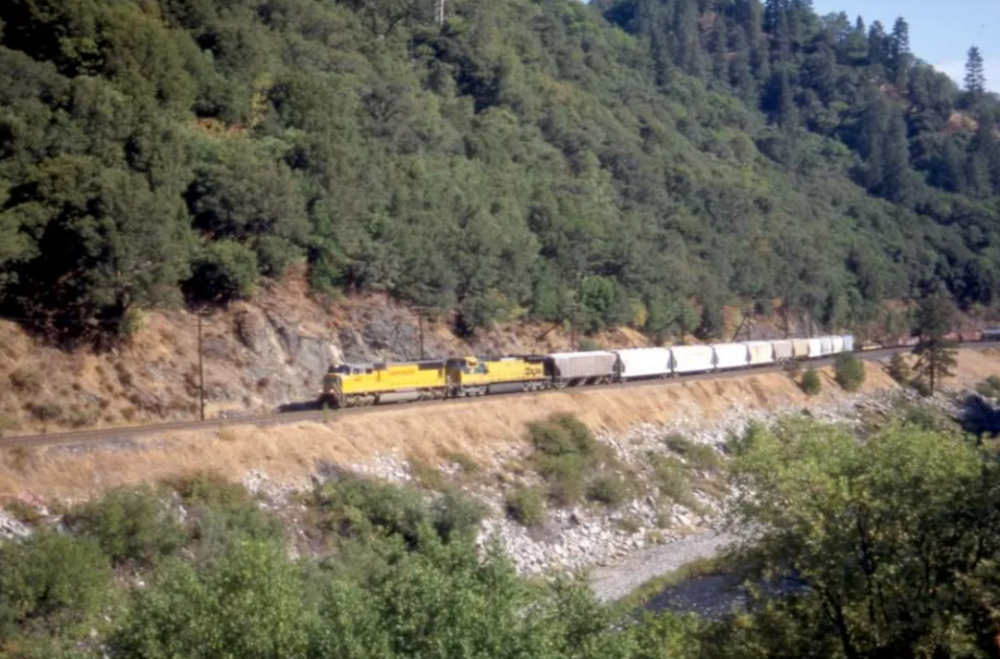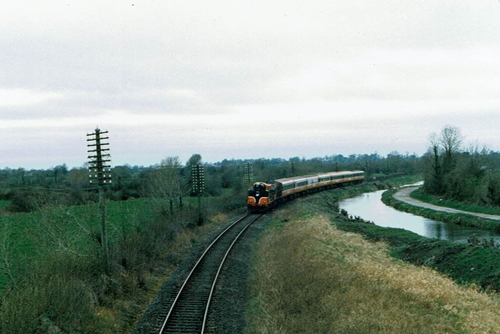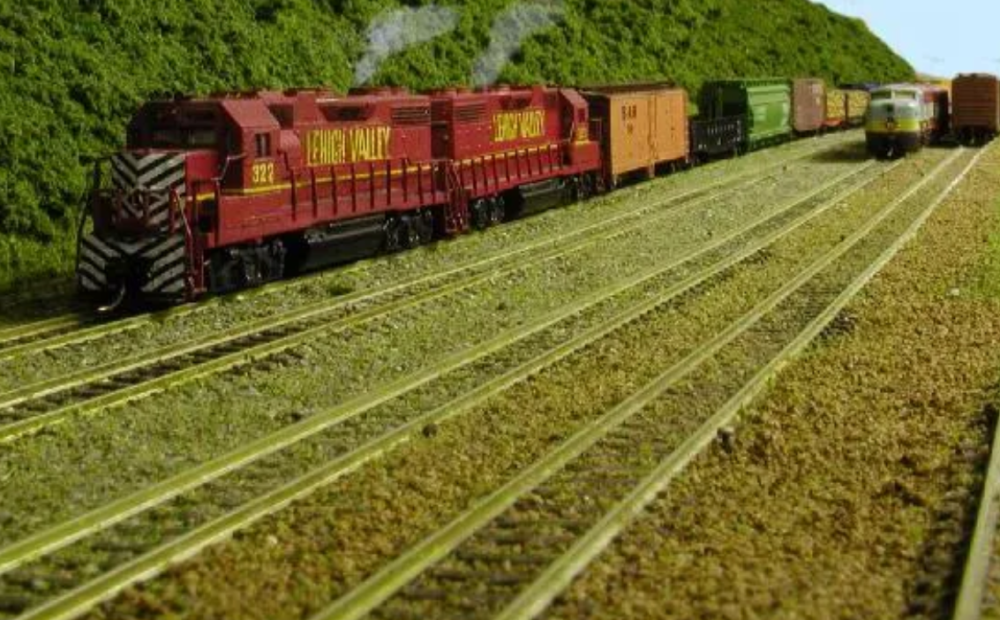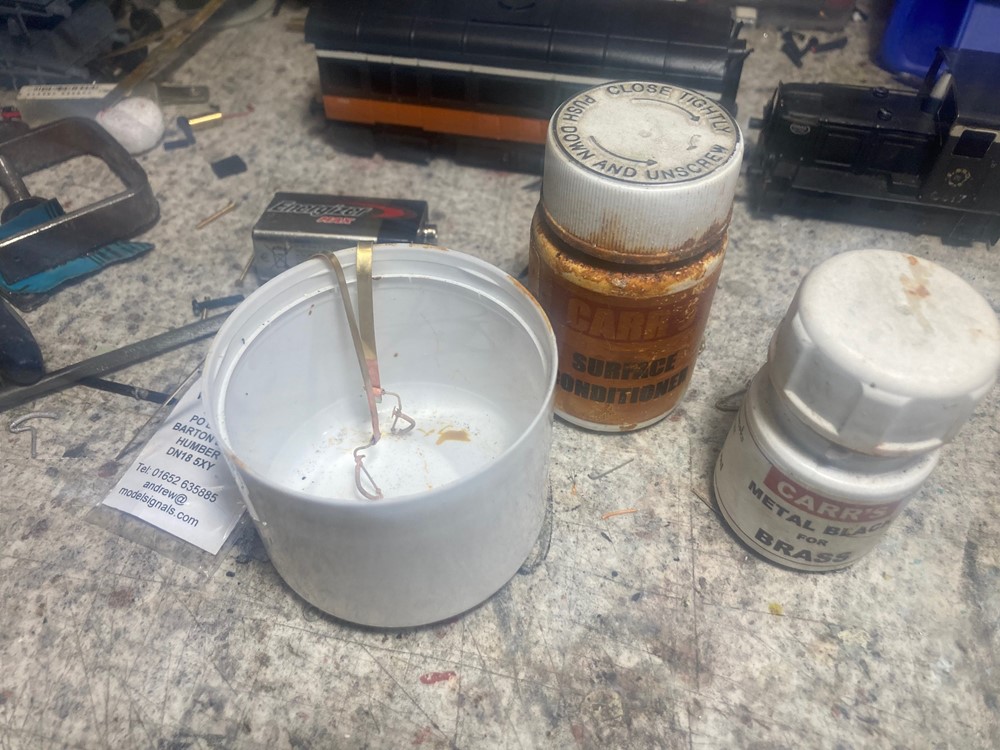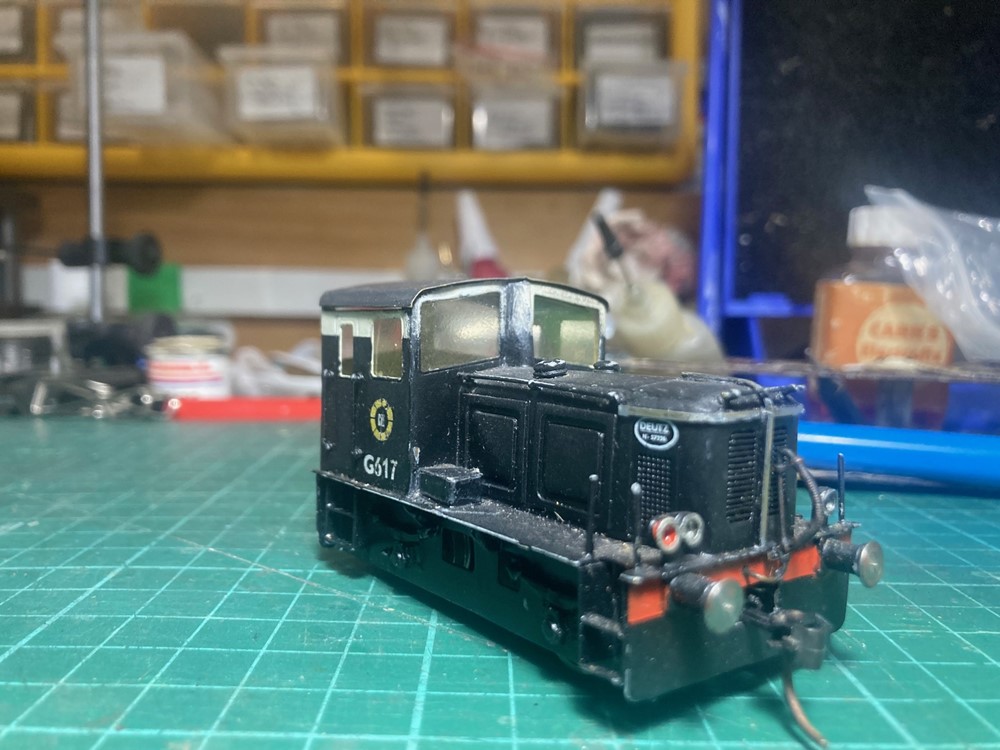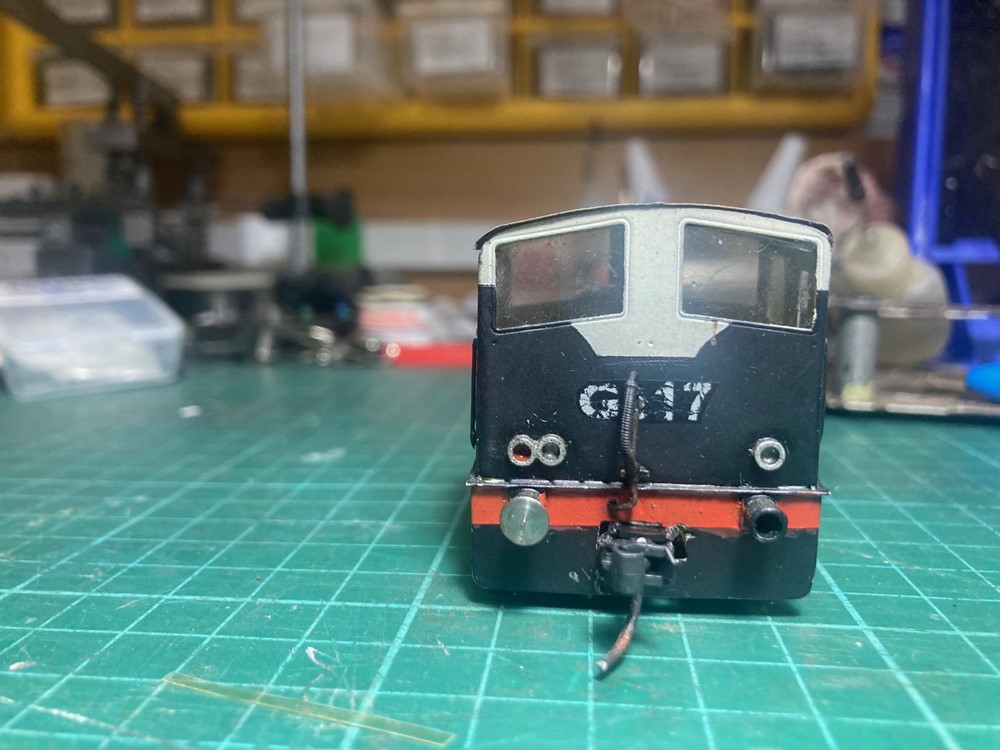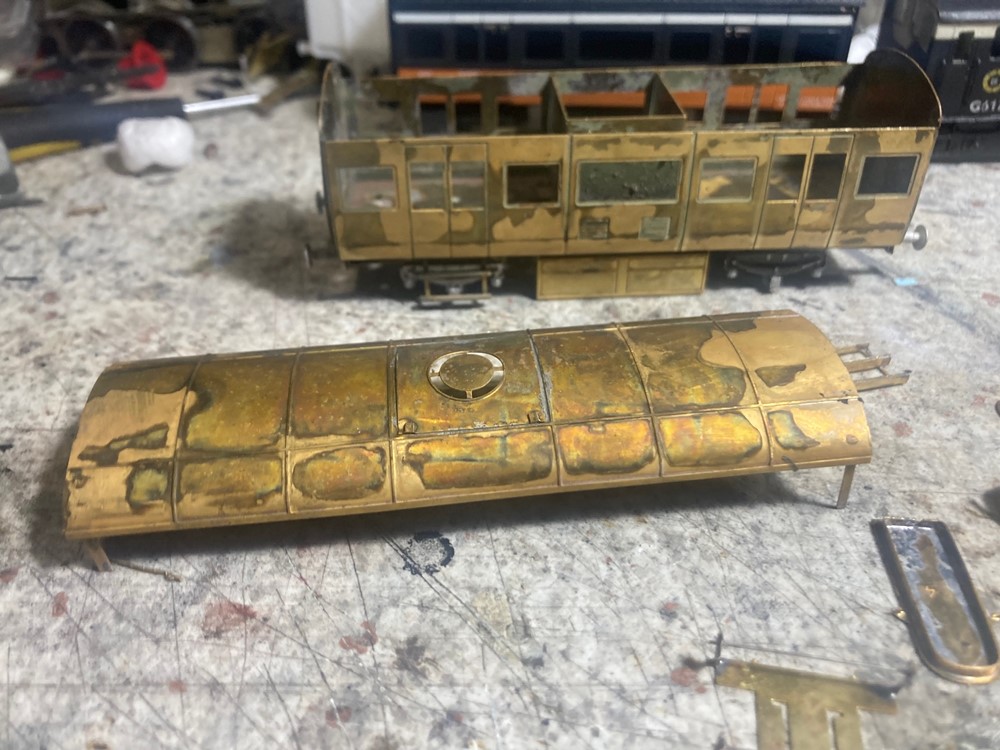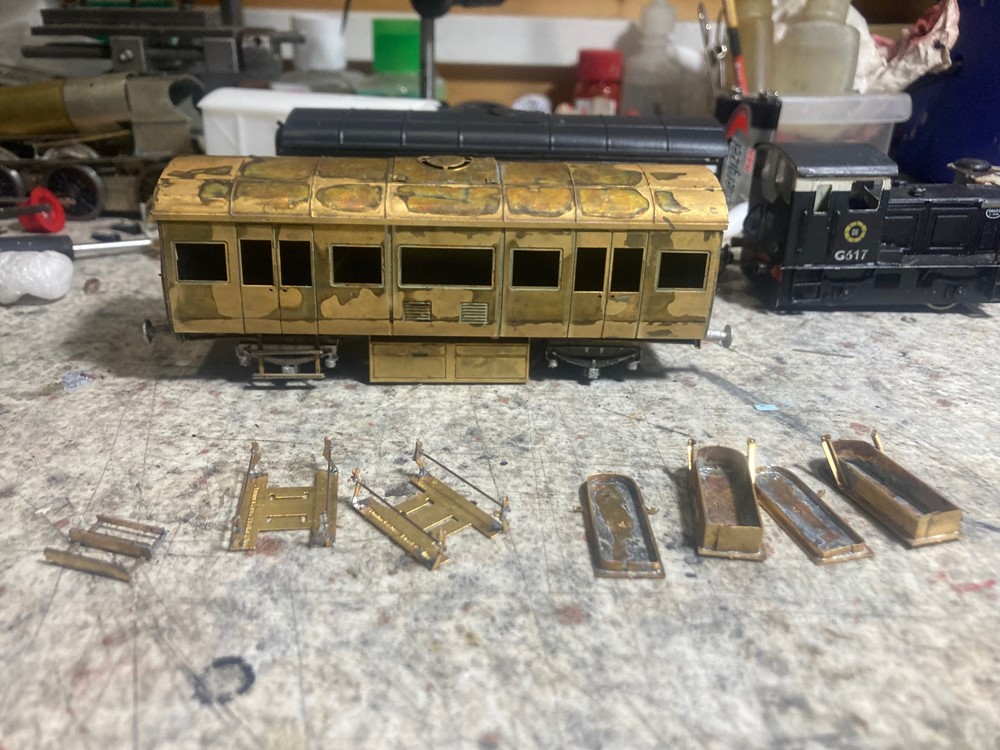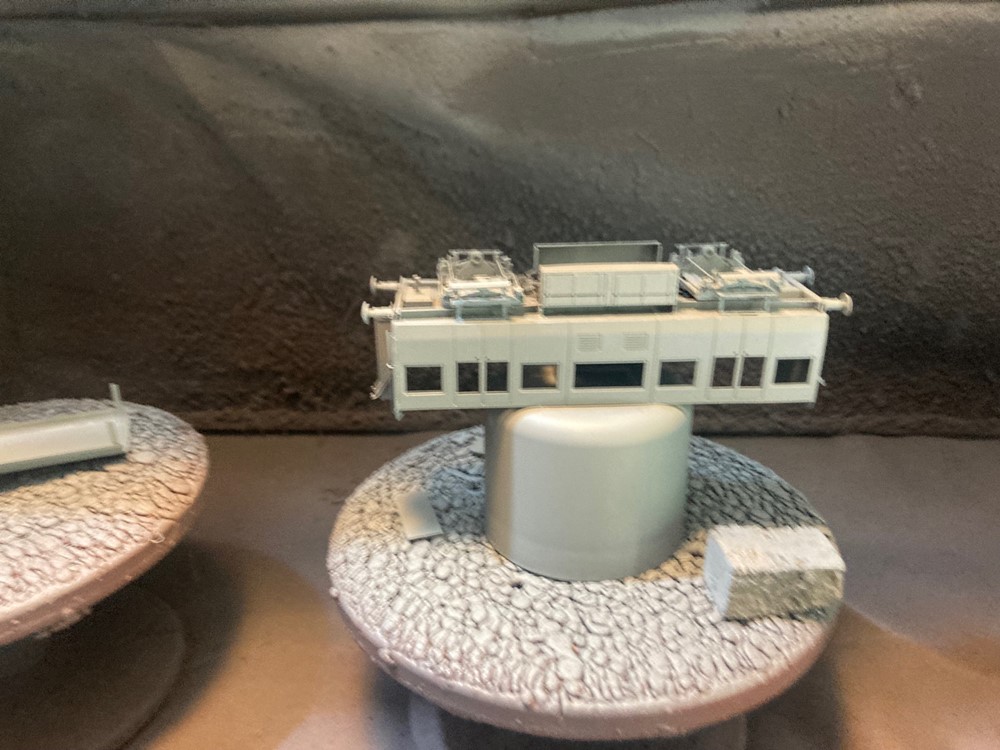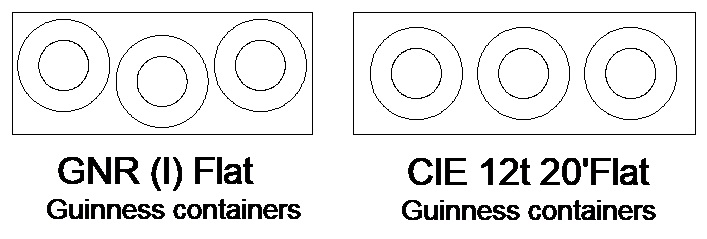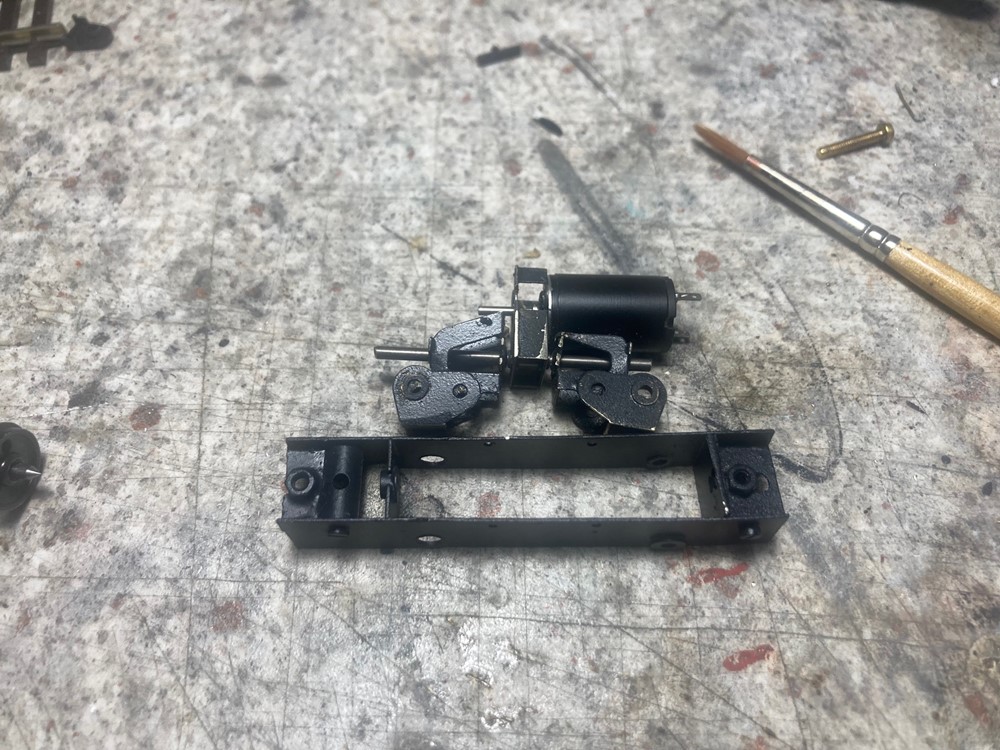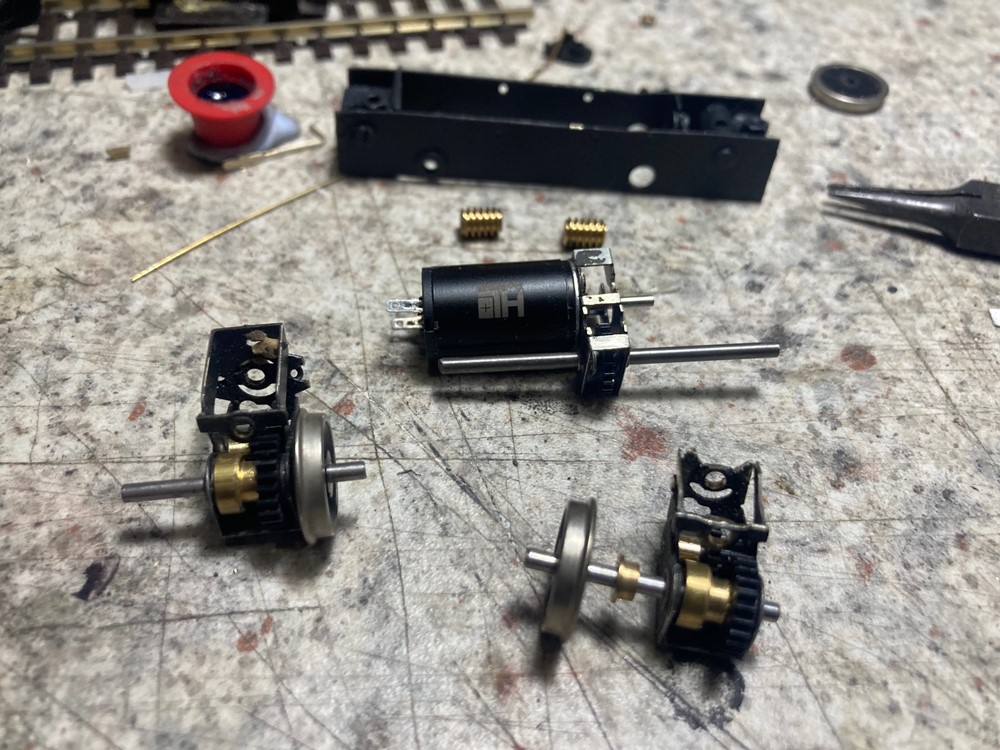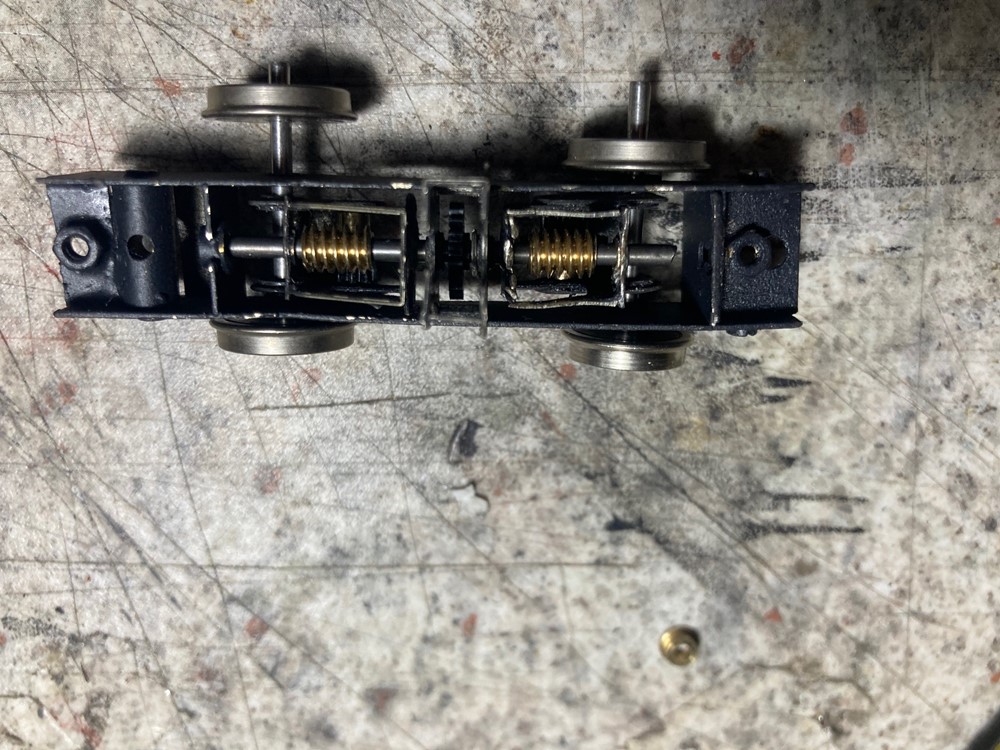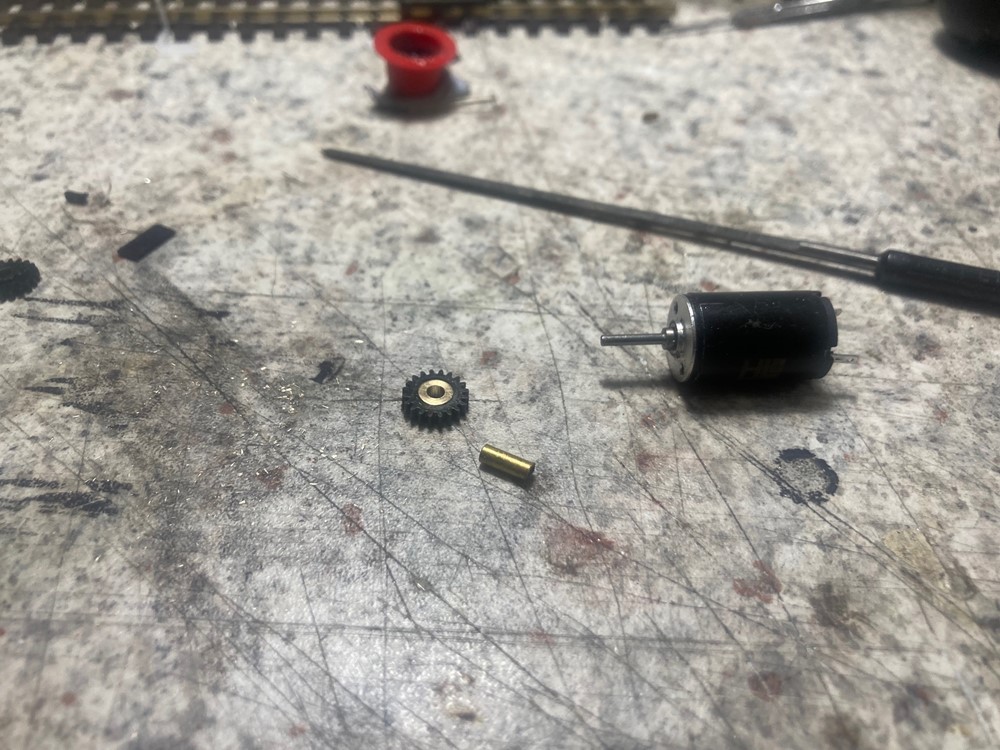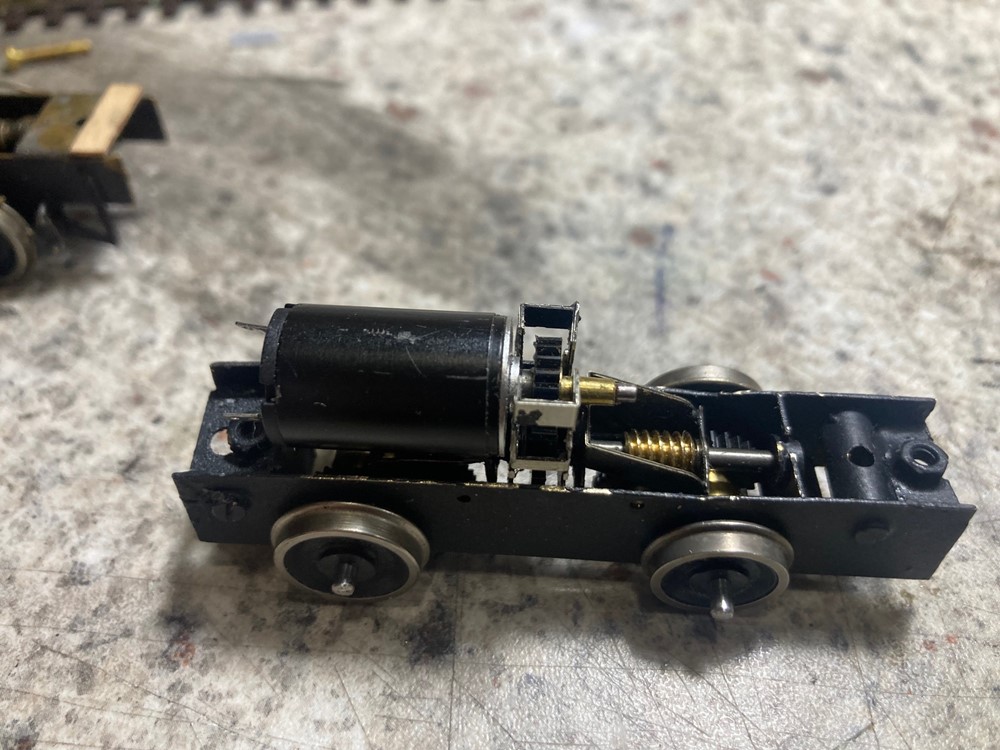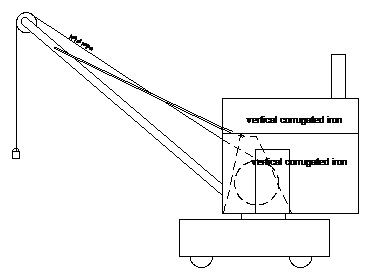-
Posts
4,853 -
Joined
-
Last visited
-
Days Won
119
Content Type
Profiles
Forums
Events
Gallery
Blogs
Store
Community Map
Everything posted by Mayner
-
For many years running construction sites one of my main roles was checking and reviewing architectural and engineering drawings before and as work progressed. On speculative housing projects it was basically a case of working with the trades on site to make sure everything fitted correctly before starting work on site. On commercial and public sector projects advising the client and design consultants on "Buildability" and "Value Engineering" (saving money) was part of our role as project manager and lead contractor. Design amendments such as the gable end windows were likely to have been recorded in a "site instruction" from the Engineer or Clark of Works to the contractor or builder, rather than a revision to an engineering or architectural drawing. One of the foreman or site managers main roles was maintaining a record of site instructions from the Engineer, Architect or Clark of Works in order for the quantity surveyor to claim for extras and variations. In the days of paper based records a large project could generate a 20' container load of "requests for instruction" and ISO 9000 quality assurance documentation from the "Builders" and "site instructions" from the design team. Some days I spent 80% of my time processing queries or "RFI" from the contractors and "SI"s from the design team and about 20% of my time on site with my own team and contractors
-
The GNR(I) & NCC built purpose built flat wagons for Bread Container traffic from the 1930s onwards Jeremy Suter produced a single run kit of these wagons about 20 years ago. CIE appears to have carried the older style containers in open wagons, before developing purpose built 20' Flat wagons for container traffic during the 1960s. The GNR and later CIE introduced aluminium bodied containers similar in outline but larger than the BR containers for Donegal freight traffic passing under customs bond through Northern Ireland BR containers in IRCH standard open wagons Studio Scale Models produce a whitemetal kit of the wooden underframe version of the open as seen in the photo. Industrial Alcohol containers on 20'-11'wb-12T capacity flats. These wagons were introduced for container traffic (including Guinness 3 containers) during the early 60s, but converted to PWD use following the introduction of 20'-12'wb-20T flats during the mid 1960s. The above photos were originally published on photo sharing site, I don't know the identity of the original photographer. 20'-11'wb container flat converted for PWD use. The Airfix/Dapol Cattle Wagon chassis would be reasonably close for one of these wagons.
-
Spray can ran out painting HLV, "Bare Metal Silver out of stock in local hobby shop but expected at some stage next week. Model consist inspired by F W Shuttleworth photos of " Night Mail" at Sligo in the Summer of 56, the original consist included an ex-MGWR 6W TPO dating from the 1880s and and ex-MGWR Meat/Fish van. a GSWR 3rd brake filling in for the photo of the model. An ex-MGWR 2-4-0 appears to have made up the train at Sligo during Shuttleworth's visit with an A Class hauling the train to Mullingar and a connection with Galway-Dublin Night Mail. I haven't a 2-4-0 in CIE condition, so No 33 Arrow in late MGWR condition posed with the "Perishable" made up mainly of ex-MGWR stock carrying urgent traffic. I will probably remove the "Capacity Load" information from the luggage van the backing film is quite noticeable and does not appear to have been used before the "black and tan' era. Mixed consists of ancient and newly introduced stock appears to have been fairly common during the late 50s, there are excellent photos of a Rosslare Harbour-Wexford Mixed in Alan Burges "Chasing the Flying Snail: the passenger accommodation is made up of a 4w Bullied Luggage Van, and ex MGWR 6w 3rd and an ex GSWR bogie Clearstory Brake Composite, hauled by a large Coey 4-4-0
- 392 replies
-
- 11
-

-
Before deciding whether its worthwhile weathering N Gauge models its best to consider the level of weathering/dirt visible on a loco and stock at normal viewing distance. American diesels seldom look weathered or dirty at normal viewing distance in N. Pride in corporate image and climate helps! Similar climatic conditions and maintenance/cleaning regime to Ireland. Otira Tunnel banking locos leading consist, pilot trains through a 5¼ mile tunnel and after a short time become dirtier than locos working over the Midland Line from the Westland to Christchurch Early 90s Sligo-Dublin reasonably clean 121 moderately weathered 141, clean coaches N Gauge diesels custom painted finished with satin lacquer (both aerosol) stock un-weathered
-
Its all relative the halfpenny looking down on the farthing. Growing up in Crumlin I was always reminded that many of us were originally from the Northside or in Brendan Behan's immortal words about being forced to move from Rutland Street to Kildare Road "to hell or Kimmage" My mother was from the North Innercity whose family considered D12 as out in the Country, my father's family from Mayo who gradually migrated eastwards as time changed from the 1920s. In the end I met a strange lady who took me in and we moved far-far away though I don't eat Vegemite.
-
Almost managed to finish G617, one buffer head missing from the "Loco Stores" collection of bits & pieces. Found some lost wax vacuum pipes from another project, decided to chemically blacken using Carr's "Metal Surface Conditioner" and "Metal Black" I had in stock for many years. First step was dipping the vacuum pipes in the surface conditioner, before rinsing in cold water and drying with a tissue. I then dipped the castings in the metal black until the metal began to turn black, removing, rinsing and then repeating the process until I was statisfied with the result, then sealing by painting with a small paintbrush with Carrs "Electrofix". Some people recommend applying the metal or gun black by wiping/working on the surface with a cotton bud but I found dipping the most effective. I fitted the loco with a 3D printed control desk, I printed several years ago and glazed the cab with "clear" plastic packing from Wills Materials pack fixed with superglue. The loco is currently operating on DC though I have ordered a selection of decoders from the United States that have a higher current rating/superior overload protection compared with similar decoders available from Europe. I decided to re-paint my original prototype 4w Heating and Luggage Van of 2012 from Black and Tan to the original silver scheme. I used Tamiya Paint Remover which struggled with the 10 year old primer coat, using IPA for the final clean up with some interesting results. Although not pretty the IPA is an effective cleaner and de-greaser and the staining does not affect the adhesion of the new primer and paint coats. The original van had 3D printed plastic gangways which did not survive immersion in the IPA. Luckily I had some spare gangways, 21mm gauge brake riggings and a foot step to replace missing/damaged parts. Finish the HLV in silver is a step in re-producing a late 1950s consist of a Sligo-Dublin Mail Train which included a mixture of 1880s MGWR and recently introduced CIE coaching stock
- 392 replies
-
- 10
-

-

Aluminium/Silver/ Stainless Steel Effect
Mayner replied to dave182's question in Questions & Answers
I use Tamiya AS-12 "Bare Metal Silver" aerosol (on a grey primer coat) for silver rolling stock for approx 10 years. -
SS No 4 Erin. Don't know how accurate the actual shade of green. Reasonably accurate dimensionally acquired second hand from a modeler in the UK about 10 years ago
-

Herbie Richards/Brendan Pender GSWR Carriage Diagrams book
Mayner replied to Colin R's topic in General Chat
The IRRS have published DCD 003 a GSWR "Carriage GA Drawing Compendium" which would be more useful than a Diagram Book for modelers intending to scratchbuild models of GSWR coaching stock. The IRRS have published GSR "Classification of Coaching Vehicles P1 & P2 and GSR "Carriage Diagram Compendium" Parts 1-3 based on stock in service during the 1930s. The GSR Diagrams Compendiums are likely to have been re-prints of the GSWR and other pre-amalgamation company Diagram Books https://irrs.ie/archives/maps_drawings/ A Galteemore indicated Carriage Diagrams are of limited value to a modeler outline only showing only one side of a coach, the main value of the collection is providing an indication of the stock that was in use in 1933 and 1937. The Compendiums are scans of original documents which were sometimes in poor, faded or damaged condition quite unlike the carriage drawings that appear in model railway magazines. -
G617 on trial (on DC) after finding the cab roof and more extended running in. The 3 point suspension with the rocking leading axle seems to be bedding in nicely including running without stalling on Peco Insulfrog points, the main challenge is keeping the wheels clean. A bit noiser than I would have liked, but may improve with running in reasonably pleased with the locos pulling power without adding additional weight to the kit Although the loco managed to fry one decoder though there was no sign of shorting and motor stall current well within the decoder's current rating. I will run the loco for another 3-4 weeks on DC to allow the drive train to bed in before before trying another brand of decoder. Question at the moment is whether to re-paint or weather the loco, the decals are wearing away and the white enamel wearing through the black! Underside of the loco showing final drive boxes and spur gearing, there is very little clearance between the bottom edge of the final drive boxes and the Kadee uncoupling magnets. 8BA nuts secure the coupling mount boxes, 10BA bolt through the cab floor and rear frame spacer aligns the body and chassis and keeps everything in the correct alignment. Need to add Alan Gibson 14" buffers, vacuum pipes, glazing and a driver to add the final touches to the loco.
- 392 replies
-
- 13
-

-
G617 on test! Power pick-ups are two pieces of phosphor bronze bearing on the wheel tyres soldered to offcuts of copper clad sleeper strip. I fitted the loco with a 6 Pin NEM socket & harness to allow the loco to run on DCC, otherwise I simply connect the pick ups to the motor terminals "just 2 wires" compared with the hassle of fitting a DCC chip. I rigged up a temporary DC adaptor with a 6 Pin NEM plug for testing and running in the loco on DC or analogue control. One of the next jobs is to find the cab roof, finalise the fixing of the body to the chassis before detailing and fittings couplers, should keep me busy to March/April!
- 392 replies
-
- 10
-

-
I am in much the same boat myself and will soon need to make a decision on whether to continue working in 4mm or move up to a larger scale or concentrate on rtr as the hands are not as steady as they once were as I move into my mid-60s. I think David Holman has the right approach build and complete models for a particular modelling project, as opposed to acquiring a 'stash' of kits or rtr models that might be useful some day. In my 20s I set out to model a section of the "Meath Road" to 21mm gauge all scratchbuilt, I scrapped most of my early scratchbuilt models of MGWR locos and stock as they were fairly crude, but did not get round to building replacements until 40 years later because I got diverted down various rabbit holes including the GNR(I), BR steam era, Irish 3' Gauge and rtr American N & HO gauge and the DRGW narrow gauge in 1:20.3 scale with the arrival of various rtr models and stock. In the end I am not really bothered about the various Rabbit Holes and culled most of my collection of British OO and American N, at this stage I got to go back to basis and focus on completing my unfinished products while I am still capable.
-
The majority of reports on the future of Ireland's railways between the 70s and 90s considered the options of retaining, immediate or a phased closure of the railways. The 2003 Strategic Rail Review was the first report to consider the future of the railways in the long term 20+ years. The Irish economy was in a weak state during the 1980s with the economy in a prolonged recession as a result of a credit squeeze and the Government attempted to control inflation and reign in Government expenditure, basically the government was spending more running the country than it was taking in in taxation and subsidising CIEs losses was low hanging fruit easy cut compared to social services, health and education. Although it was not spelled out as such the Irish Government's "Building on Reality" economic envisaged a gradual run down and closure of the railways over 20 years with no future capital investment in the railways after the completion of the MK3 Intercity Coach programme and the completion of the Cork Line CTC system. In return for an operating subsidy paid above the line for loss making passenger services, CIE was divided into three operating companies Bus Eireann, Dublin Bus and Irish Rail which were expected to compete with each other, operate profitably and fund their own capital investment from retained profits or commercial borrowing. To their credit the three companies demonstrated a lot more initiative than under CIE management. Irish Rail made a determined effort to improve service and increase passenger and freight traffic, demonstrating iniative such as hiring NIR 80 Class railcars, reinstating the Bray Greystones Shuttle and pursuing new sources of freight traffic such as grain, mollasses and pulpwood. In the end like other rail operators of the 90s Irish Rail generated insufficient income despite a large public subsidy to cover the cost of infrastructure and rolling stock renewals as deferred maintenance caught up and the system basically started to fall apart during the early 90s. The railways were largely rescued by a large EU Infrastructure grant with Ireland signing the Single European Act during the 1990s paying for the re-laying and modernisation of the lines in the West. CIE (both management and unions) continued to be a thorn in the side of the Irish Government until a long term decision of the future of the railways was made after the ending of the ILDA dispute in the early 2000s. The Dublin-Border line upgrade and Heuston-Kildare suburban were originally presented as either-or projects with the Kildare line service having precedence over the Enterprise upgrade until EU/Ireland Fund funding was made available. The Maynooth Line upgrade was funding by EU funding diverted from the LUAS when the project was put on hold during the late 80s. There is an old saying that Merrion Street could be an efficient executioner of railways as Stormont, though the Ulster politicians were more open about their intentions. The Department of Finance adapted a policy of drip feeding investment for CIE over many years while the CIE Chairman warning the Government that it could no longer safely operate services with 1950s timber framed and laminate stock, effectively protecting the Board and Management of CIE in the case of a Corporate Manslaughter charge in connection with the Buttervant and Cherryville disasters. CIEs plans to build new trains in Inchacore under license from Linke Holfmann Busch during the late 70s were rejected by the Government and replaced with a programme to build BREL MK3 coaches during the early 80s when it became essential to replace older coaching stock with poor crash resistance following the Buttervant derailment and Cherryville collision. Similarly IEs proposal to build new diesel railcars for suburban and branchline services were rejected by the Government during the late 80s though approval was given to build the last 24 coaches of the Intercity order as Push-Pull suburban stock Its not just an Irish thing in recent years the New Zealand Treasury was highly critical of the Governments investment in rail despite Kiwi rail operating profitably carrying 18m tonnes of freight or 13% of the freight task.
-

Ernies Massive Irish 1930's to 2005 Photo Archive
Mayner replied to Glenderg's topic in Photos & Videos of the Prototype
No 8 train includes a long cut of container wagons used for carrying Cross-Border Guinness traffic from the late 50s to mid-60s. The containers (grey with blue Guinness lettering) were introduced before the break up of the GNR in the late 50s, usually loaded 3 containers per wagon. The containers were originally staggered on GNR container wagons until replaced by longer CIE wagons during the early 60s. The Dapol/Airfix Prestwin chassis would be close enough for a OO gauge model of the CIE 12t 20' flats used with these containers and general container traffic on the North Wall-Waterside derry Vacuum Ireland 1st Liner Train Provincial Wagons produced, a flat wagon with two of these containers. -
Family gone to the Cinema to see Avatar 2 this afternoon which means I got a chance to play trains in the workshop! G617 Chassis now ready for final assembly. Some last minute changes included fitting mounting plates with 8BA captive nuts at each end for Kadee couplers Starting the final assembly The motor drives a layshaft through a 1:1 "Tender Riser", the final drive to the axles is through two "Road Runner Compact" gearboxes. A common arrangement in N and 009 locos I used a similar drive system in a RH DS88 shunting loco and a CDR railcar built during the late 80s early 90s The first challenge was fitting the output gear to the Tender Riser, I used a "narrow" gear which is a push fit on the shaft. The chassis is compensated with one fixed and one rocking axle gearbox/final drive unit, the "rocking' end of the layshaft is supported by a frame spacer & top-hat brush. Final drives assembled with worms Loctited to the shaft. The top of the RH gearbox looks rough, I trimmed the top of the gearbox cradle (non structural) to allow the motor to fit. The biggest challenge to the project was fitting the output gear to the motor. the TendeRiser is designed around 2mm bore gears, while motors are currently available with 1mm and 1.5mm shafts. I originally planned to buy 2mm-1.5mm bore brass tube from Eileen's Emphorium as no suitable tune was available locally, but managed to find a small section of 1.5mm bore tube in the scrap box. I opened up the brass centered gear to a sliding fit on the tube using a tapered broach before Loctiting the gear to the tube and the tube to the motor shaft Chassis almost ready for testing, fit pickups and allow Loctite 24 hrs. to set!
- 392 replies
-
- 15
-

-

Ernies Massive Irish 1930's to 2005 Photo Archive
Mayner replied to Glenderg's topic in Photos & Videos of the Prototype
The railways in Northern Ireland were geared up to meet the demands of a War economy, while the GSR was mainly geared up towards moving exports people and food to the Cross Channel Ports. I don't know if applied to the GNR, before the War Stormont subsidized railways on a £ for £ basis on loss making cross-border rail services, the payments continued on a £ for £ basis (based on net income) during the War although the railways were now profitable. The retained profits allowed the CDJR to continue operating to 1959 and helped keep the SLNCR buy Railcar B after the War May have helped the GNR go shopping for new steam locos and diesel railcars after the War. -
Happy Christmas !!!!!!!!!!
- 30 replies
-
- 12
-

-
Saw this on an RM thread on older inspiring layouts. Part 1 includes the ground breaking 2mm scale Chiltern Green. In a way the overall standard of modelling has not moved on since the 1980s
-

I wonder how many of us got a train set for Christmas!..........
Mayner replied to LARNE CABIN's topic in General Chat
Photos of Lego on the heart rug in the parlour brings back memories. When I was little I wanted to be a farmer and made farms and played with my Corgi tractors on the rug, and later started building Lego bungalows. I ended up working as a Site/Project Manager for many years coordinating large groups of people playing with 1:1 scale blocks and machinery. Early days playing with Lego may have helped me start thinking 'outside of the box' important for solving 1:1 scale real life problems as a manager. Daughter (13) has ordered a Lego "Harry Potter" set for Christmas and has taken on the project management side from her old Dad, with a growing portfolio of assembled Lego Sets taking over china cabinets and display cases around the house! -
The Hattons LNWR coaches should stimulate demand for LNWR,DNGR and GNR locos! Possibly a OO Works Crew Special Tank/DNGR 0-6-0ST though similar in general outline the DNGR loco would require a separate running board/footplate tooling to the Crew Special. The DNGR locos had larger driving wheels and a different running plate profile to the "Crew Special" There are several photos of GNR JT 2-4-2T on the DNGR. Richard Hobbs designed 3D printed JT complete with OO chassis has been available for several years www.glr3dmodeldesign.co.uk recommended using plasticard overlays to complete the loco. Harry Connaughton a professional model maker produced a batch of rtr OO & 21mm GNR JT 2-4-2T (used on the DNGR) during the early 70s which may show up on the second hand market or deceased estate.
-

I wonder how many of us got a train set for Christmas!..........
Mayner replied to LARNE CABIN's topic in General Chat
My first set (early 60s) tin plate American freight train, the loco was powered by a single battery in the boiler loco and all cars 4w, second set 2-3 years later was tinplate American streamliner (3 car) again all 4w but could also run in reverse. The tinplate sets did not last very long as I was and still am a 'tinkerer" who enjoys taking things apart. The third set a Lego train with a battery locomotive lasted longer as I was able to rebuild the locomotive from a Tank to a Tender loco using parts from my Lego set. I got to choose a 'proper' train set a Triang-Hornby "South African Goods" for my first teenage Christmas present during the late 60s. There was nothing South African about the set as it featured the recently introduced M7 loco and BR wagons. The "South African Goods" did not last very long I traded in the M7 for a Triang-Hornby 0-6-0 diesel shunter a year later and started scratchbuilding plasticard and tinplate British and later Irish outline bodies to run on butchered Triang-Hornby chassis. My first reasonably successful kitbash was a crude model of SLNCR Lough Gill with a tinplate body (Coke tin) on a Triang Princess chassis block fitted with Triang-Hornby 0-6-0 driving wheels, it looked rough but actually ran, I butchered the Princess into a Black 5 before attempting the Irish loco. I guess I haven't changed much I am still a tinkerer after 50 years though the end results in terms of my modelling seem to have improved -
Fenit used self propelled steam cranes on the pier lines http://www.kennellyarchive.com/id/MYH007/ The Fenit cranes ran on the pier lines, but do not appear to had buffing gear or couplings for shunting wagons, I am planning something similar for Northwharf using a Jordan HO steam navvy as a basis There are a number of colour photos of the cranes in JHBs & Barry Carse's book Rails through North Kerry none unfortunately showing the "cab" end. The Fenit cranes appear to had a 'fast' hoist rope with a simple hook rather than the double block arrangement shown in the second sketch. The cranes appear to have had a fixed 'non' luffing jib supported by struts that go back to an A frame inside the cab The hoist drum and engine were inside rather than outside the "cab" to keep the engine and drum dry to prevent the hoist rope slipping. The "cab' layout is likely to have been similar to a steam navvy or the steam cranes at Chatham
-
Better still fit the loco with a number plate and its is basically correct for a loco running in GSR condition (apart from the narrower running plate/position of the cylinders and motion). The Inchacore smokebox door with hand wheel appears to be a late Emergency/CIE modification.
-
The Shapeways resin option appears to have been first offered 1-2 years ago. Accura Xtreme 200 appears to be the most suitable for small scale models. https://www.shapeways.com/materials/sla-accura-xtreme-200
-
Shapeway designers have the option of offering models in a variety of materials, but few model railway designers select the resin print option possibly because to the high cost. I priced a few examples and the resin prints work out roughly 2½ times more expensive than their default White Versitile Plastic material (pebble dash finish)
.png.c363cdf5c3fb7955cd92a55eb6dbbae0.png)

